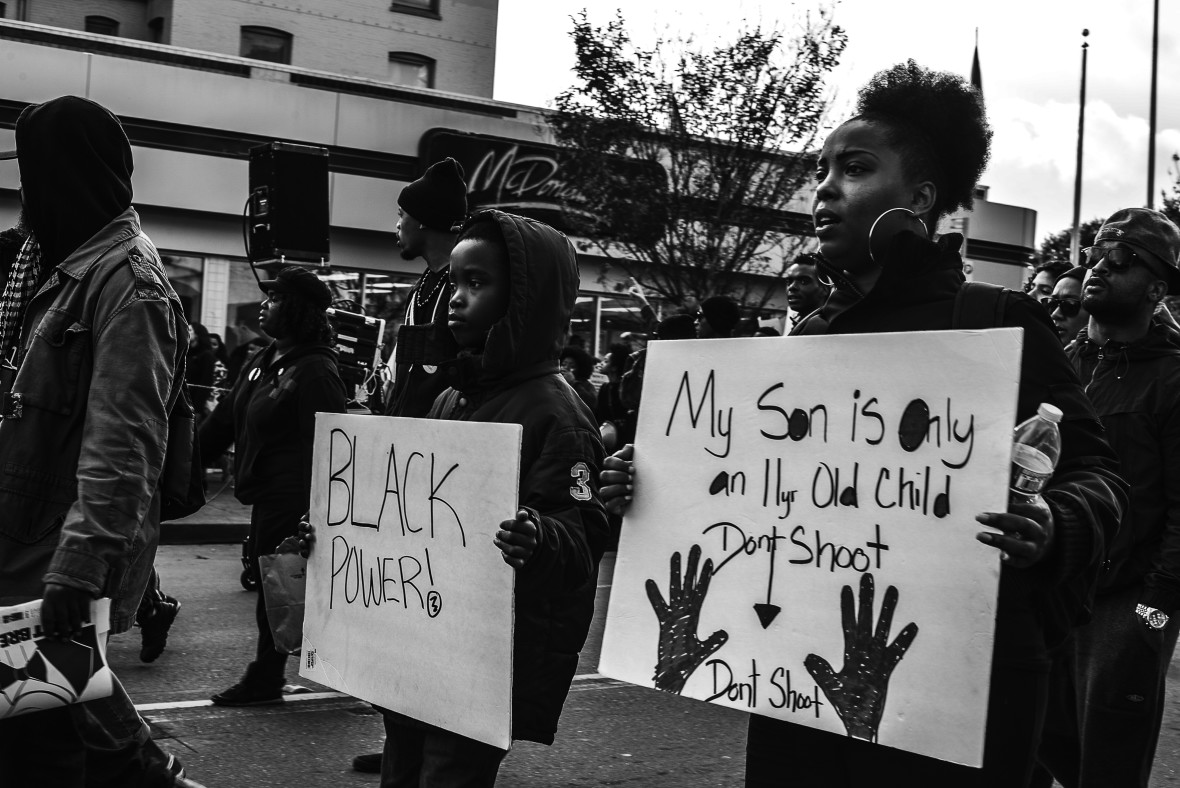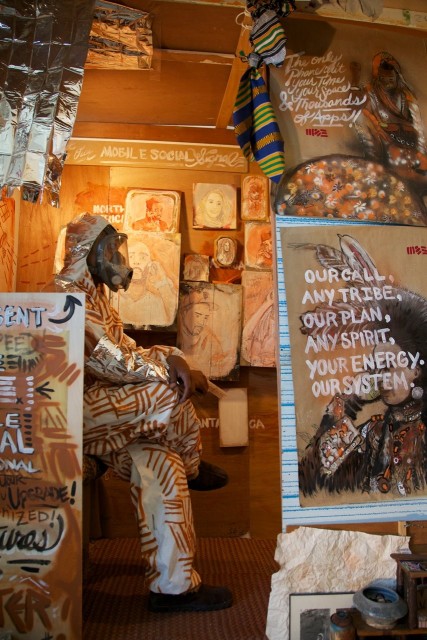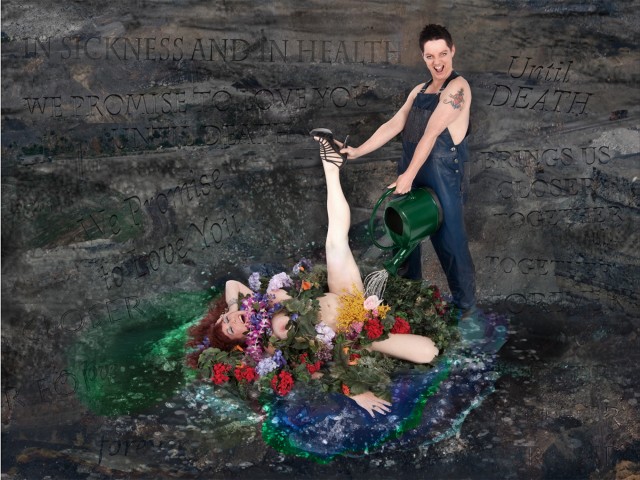With its first seeds planted half a century ago, SOMArts has long been a hub for radical and cultural resources, currently sharing space with nearly 100 local nonprofit organizations. Thus, it’s the perfect home for their current exhibition, Making a Scene: 50 Years of Alternative Bay Area Spaces, celebrating both the venues and the visionaries who utilized those spaces to make the Bay Area’s self-propelled scene what it is today.
The exhibit is by no means inclusive of every group or space with roots in the Bay. SOMArts simply doesn’t have the space. Instead, the curators selected roughly 30 pieces of archival visual art from two dozen individuals or spaces for the installation, including Emory Douglas, Annie Sprinkle, Caleb Duarte and BAVC (Bay Area Video Coalition). Combined with these are new works by contemporary artists following in their footsteps.

Sunshine Velasco’s up-close-and-personal photographs of radical movements like Black Lives Matter and Palestinian resistance are intense with emotion. They feel personal and strong, unlike many of the images disseminated by mainstream media outlets.
Jeremy Novy’s collection of graffiti-influenced pieces resist the hetero-male dominated world of street art. Each small piece, stenciled on wood with spray paint, depicts sexualized men in fun, celebratory ways before the AIDS epidemic.

Marlon Ingram’s installation, Indigenous Tips for a Modern Now draws from the artist’s experience in Central and Southern Africa. While there, he noticed that locals, who knew little about how cellphones (and their bills) worked, were sold on costly devices and trapped in contracts. Constructed of plywood to resemble the informal market booths found throughout many African countries, Ingram’s installation provides alternative proposals for communication and connection between people and their environment.
Each piece in Making a Scene ignites a spark or call to action in the viewer — some even provide opportunities to participate directly. The exhibit includes blank wall space for visitors to fill in names and information about their own radical spaces, and the Bay Area Society for Art & Activism provides access to Collective Memory, a Wiki site where visitors can contribute audio or stories.
And aside from the “makes me want to start a revolution” vibe that many elements in the exhibit evoke, there are pieces that provoke laughter with a sense of wackiness.

Fun, outlandish puppets celebrate the eccentricities of the Sisters of Perpetual Indulgence, whose lively bingo events raise funds for Bay Area nonprofits. Likewise, historical documentation of the Circus Center of San Francisco (formerly known as the Pickle Family Circus), depicts a circus training school with its very own clown conservatory program.
Another celebratory piece comes from Annie Sprinkle, a sex-educating performance artist and activist with a fierce love for all things earth. Ecosexual Wedding Project presents videos of seven weddings. In each, the participants marry a different element: earth, sky, snow, coal, soil, the sun and moon. Staying true to Sprinkle’s interest in merging sexuality, art, activism and ecology, the televisions displaying these unions are connected by tree branches.
And if the exhibit itself isn’t enough to get you to SOMArts, the crew hosts Nightlight: A Multimedia Garden Party on July 18. The party features audiovisual performances, digital and cinematic projections and celebrates the spirit of activism and community engagement that runs through the heart of Making A Scene.
The exhibit gets to the Bay Area’s true, wild, mover-and-shaker, vibrant core and the history that made us who we are today. It is a reminder that amid overpriced real estate and Google buses, the soul of San Francisco is still alive.